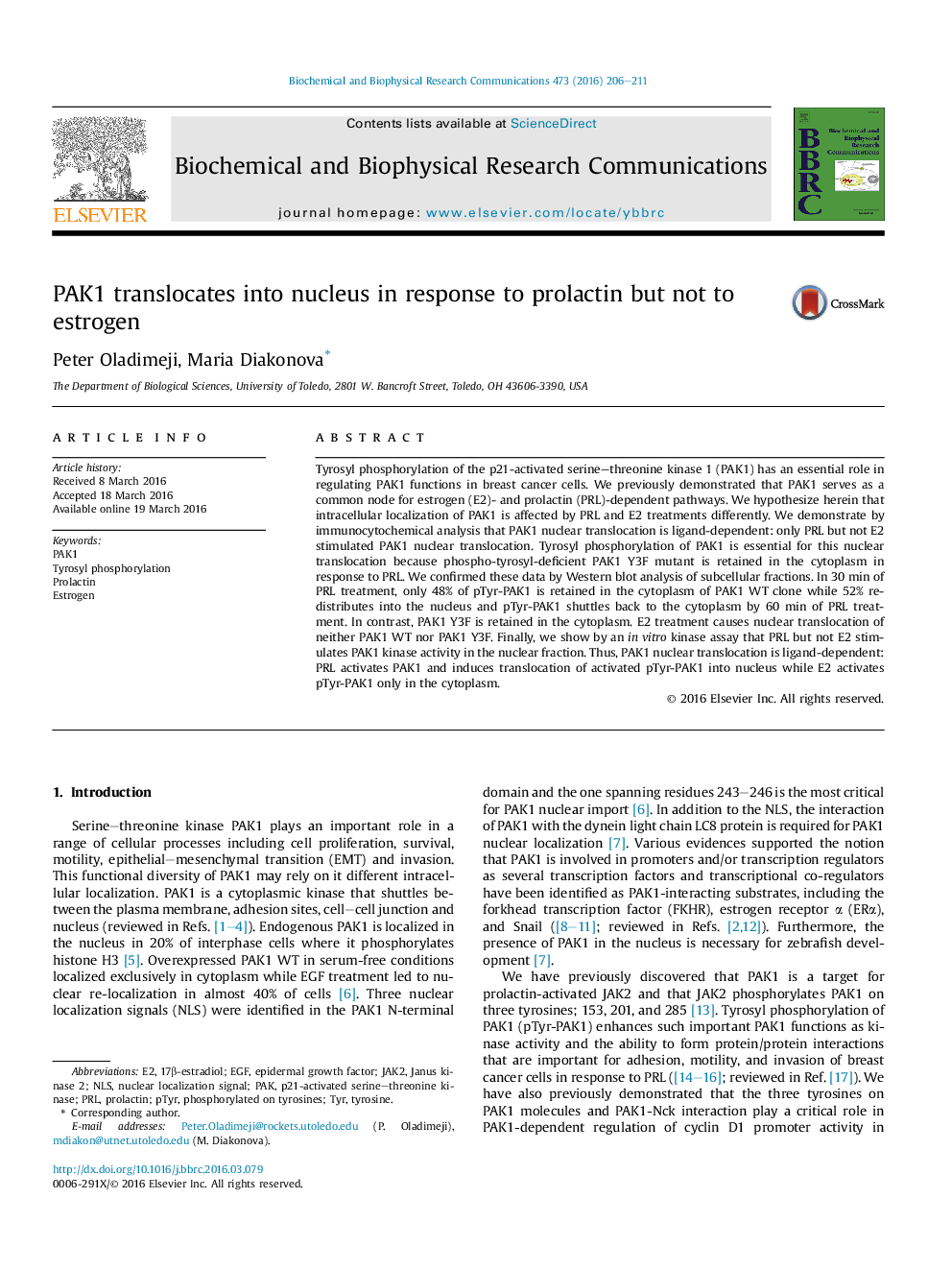| کد مقاله | کد نشریه | سال انتشار | مقاله انگلیسی | نسخه تمام متن |
|---|---|---|---|---|
| 1927879 | 1050268 | 2016 | 6 صفحه PDF | دانلود رایگان |
• Prolactin but not estrogen causes translocation of PAK1 into nucleus.
• Tyrosyl phosphorylation of PAK1 is required for nuclear localization.
• Prolactin but not estrogen stimulates PAK1 kinase activity in nucleus.
Tyrosyl phosphorylation of the p21-activated serine–threonine kinase 1 (PAK1) has an essential role in regulating PAK1 functions in breast cancer cells. We previously demonstrated that PAK1 serves as a common node for estrogen (E2)- and prolactin (PRL)-dependent pathways. We hypothesize herein that intracellular localization of PAK1 is affected by PRL and E2 treatments differently. We demonstrate by immunocytochemical analysis that PAK1 nuclear translocation is ligand-dependent: only PRL but not E2 stimulated PAK1 nuclear translocation. Tyrosyl phosphorylation of PAK1 is essential for this nuclear translocation because phospho-tyrosyl-deficient PAK1 Y3F mutant is retained in the cytoplasm in response to PRL. We confirmed these data by Western blot analysis of subcellular fractions. In 30 min of PRL treatment, only 48% of pTyr-PAK1 is retained in the cytoplasm of PAK1 WT clone while 52% re-distributes into the nucleus and pTyr-PAK1 shuttles back to the cytoplasm by 60 min of PRL treatment. In contrast, PAK1 Y3F is retained in the cytoplasm. E2 treatment causes nuclear translocation of neither PAK1 WT nor PAK1 Y3F. Finally, we show by an in vitro kinase assay that PRL but not E2 stimulates PAK1 kinase activity in the nuclear fraction. Thus, PAK1 nuclear translocation is ligand-dependent: PRL activates PAK1 and induces translocation of activated pTyr-PAK1 into nucleus while E2 activates pTyr-PAK1 only in the cytoplasm.
Figure optionsDownload as PowerPoint slide
Journal: Biochemical and Biophysical Research Communications - Volume 473, Issue 1, 22 April 2016, Pages 206–211
